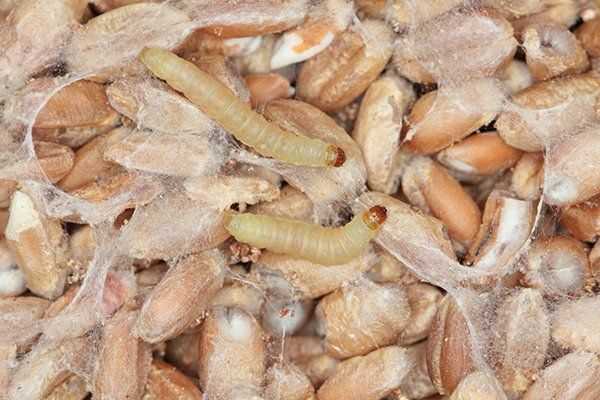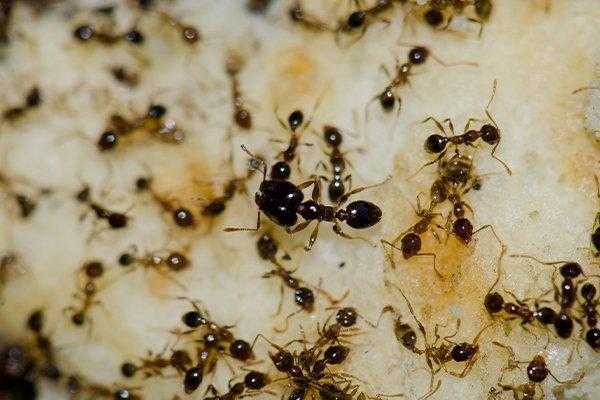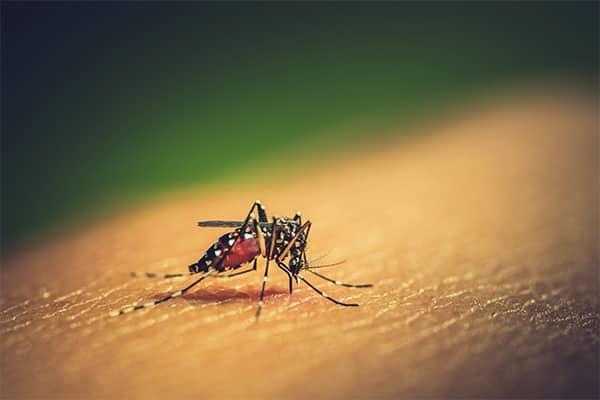Indian Meal Moth Identification & Prevention

What are Indian meal moths?
A type of pantry pest, Indian meal moths are an unwelcome sight inside of any kitchen or pantry. After a female lays her eggs on an appropriate food source the larvae (caterpillar) hatch and begin feeding on the provided food. Indian meal moth larva is about 1/2 inch long, has a brown head with a worm-like body and a pinkish, yellowish, or greenish body. The larvae are often identified by the silken webbing created on the surface of the food they are consuming.
Adult Indian meal moths have an oval-shaped body and are easy to identify by the unique color pattern on the wings. The front half of the wing is brown or cream-colored while the back half of the wing is a darker bronze color. From wing tip to wing tip adults measure 5/8 to 3/4 of an inch in length.
Are Indian meal moths dangerous?
Indian meal moths are dangerous because of the amount of damage they cause by contaminating food sources. The good news is the adults aren’t known to transmit disease and don’t bite. The structure of a home or other building invaded by Indian meal moths is not damaged by these pests. These pests are frustrating and difficult to eliminate. At the first sight of them inside of your home, it is important to contact a professional to eliminate them from your home!
Why do I have an Indian meal moth problem?
Indian meal moths are difficult and frustrating pests to deal with. A single female has the ability to lay hundreds of eggs in their lifetime, so even just a few moving into your home is problematic.
Here are two of the most common ways Indian meal moths make their way into your home:
- Light attracts adult Indian meal moths. The adults often find their way inside after drawn to the outside of your home by outdoor lighting and then moving inside through space around windows, torn screens, or open doors.
- An Indian meal moth infestation often originates at a food processing or food storage facility. Products you then purchased from the grocery store previously infested with Indian meal moth larvae or eggs will cause an infestation within your home.
Where will I find Indian meal moths?
Indian meal moth eggs and larvae typically live indoors and feed on a variety of stored products including cornmeal, grains, cereals, seeds, chocolate, birdseed, and dry pet food. The process of developing from egg to adult may take from 25 to more than 300 days depending on the environmental conditions. The higher the humidity levels, the faster the Indian meal moths complete their life cycle. Adults do not feed. Adult Indian meal moths have a short life span with their sole responsibility being reproduction.
Some of the most common places that Indian meal moths live and feed include:
- Homes
- Grocery stores
- Restaurants
- Pet stores
- Food processing plants
- Food storage facilities
How do I get rid of Indian meal moths?
The smartest way to eliminate Indian meal moths and other pests from your property is to partner with the professionals at Smart Pest Control. We deliver pest control services in Costa Mesa that are comprehensive and detailed in order to make sure we get to the root of your pest problem and completely solve it.
To learn more about how our locally owned company will protect your property from pests, reach out to Smart Pest Control today. We can work together to ensure your Costa Mesa, CA home or business becomes and stays free of pests, we guarantee it! Call today to learn more about our home Indian meal moth control solutions in Costa Mesa!
How can I prevent Indian meal moths in the future?
The professionals at Smart Pest Control are able to help you prevent problems with Indian meal moths and other pests. In addition, use the following helpful tips to help prevent future problems with Indian meal moths.
- Before purchasing dry goods from the store, inspect the packaging for holes or tears.
- Remove dry goods from original packaging and place inside plastic or glass air-tight containers. Doing so limits the access Indian meal moths and other pantry pests have to food sources for their developing larvae.
- Regularly clean out the pantry and get rid of expired items.
- Prevent adults from moving inside by replacing torn screens, placing weather stripping around windows and doors, and keeping doors and windows closed.

Schedule Your Free Inspection
Complete the form below to schedule your no obligation inspection
Recent Blog Articles

Why Are There So Many Ants In My Orange County Home?
There are over 700 species of ants in the U.S. with some of them being found in Orange County homes. Keeping them out of your home can seem like a big task...

The Answers To Your Questions About Orange County's Mosquitoes
In Orange County, mosquitoes are a fact of life. They're always around and are annoying since they feed on your blood by biting you.